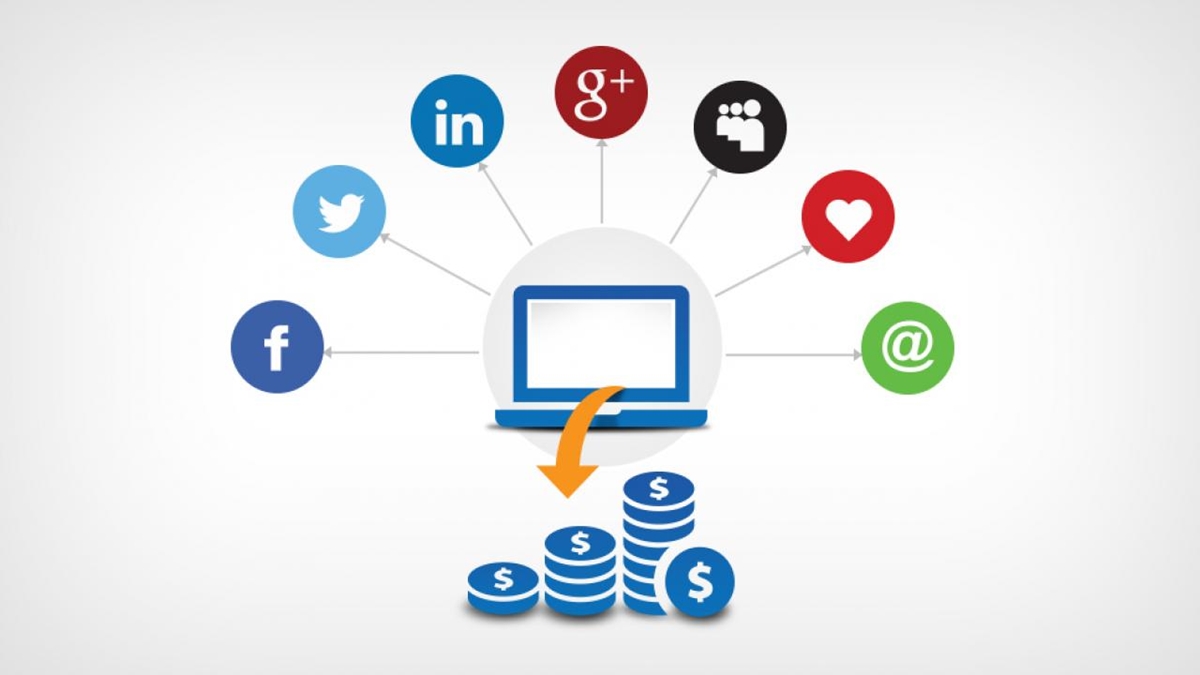What is Social Media Marketing? Why Social Media Marketing is a Must For Business
With companies looking for the best ways to expand their reach to their customers, social media marketing has rapidly become one of the simplest and most cost-effective solutions.
Social media marketing allows companies of all sizes to meet customers where they spend an increasing amount of their time — social networking sites. Social media marketing involves selling or attempting to sell a product through ads on social networking sites or social media sites such as Facebook, Twitter, Google+, Instagram, and Pinterest.
Social media marketing is about producing original, free, content on the websites in order to create awareness about the brand. The goal is to create content that followers would find interesting enough to share with their social circle. The final purpose is to build a wider circle of customers who are interested in a brand.
In this article, I will explain to you what social media marketing is, why it’s crucial to eCommerce businesses, and what makes a successful social media marketing strategy.
What is social media marketing?

Social media marketing, or SMM, is a type of eCommerce marketing that involves generating and sharing content on social media channels in order to reach your marketing and branding objectives. Social media marketing involves practices such as paid social media ads, or sharing text and image posts, videos, and other information that promotes customer engagement.
What are the most popular social media marketing channels?

Social media marketing is all about reaching your target audience and consumers where they are and how they connect socially with each other and with your brand. Although social media marketing as a whole is extremely useful and helpful to your business growth (will be explained in the following sections), your approach can differ depending on the social networks your audience spends their time on. Before we learn more deeply about social media marketing, let’s see what the most popular social media marketing channels are these days:
- Users: 335 billion
- Audience: Primarily millennials
- Industry impact: B2B and B2C
- Best used for: Public relations; customer service
- Users: 2.2 billion
- Audience: Millennials and Generation X
- Industry impact: B2C
- Best used for: Brand awareness; advertising
- Users: One billion
- Audience: Primarily millennials
- Industry impact: B2C
- Best used for: Natural-looking media, behind-the-scenes, and user-generated content; advertising
- Users: 645 million
- Audience: Baby boomers, Generation X, and Millennials
- Industry impact: B2B
- Best used for: B2B relationships, business development, and employment marketing
YouTube
- Users: 1.9 billion
- Audience: Millennials, Generation Z
- Industry impact: B2C
- Best used for: Brand awareness; entertainment, and how-to videos
Snapchat
- Users: 300 million
- Audience: Primarily Generation Z
- Industry impact: B2C
- Best used for: Brand awareness; advertising
- Users: 250 million
- Audience: Primarily older millennials and younger baby boomers
- Industry impact: B2C
- Best used for: Visual advertising; inspiration
Now that we’ve looked at [the most popular social media networks](https://avada.io/resources/best-social-media-platforms-2020 and what types of audience you can target on each platform, let’s see what a successful social media marketing strategy is made up of.
5 components of a successful social marketing strategy
1. Strategy

Before you dive right in and post something on social media, take a step back and look at the bigger picture. The first move is to think about your plan for social media.
- What are your objectives? How can social media marketing help you achieve your company objectives? Some businesses use social media to increase their brand recognition, while others use it to boost website traffic and sales. Social media can also help you build awareness with your brand, develop a community, and act as a customer service platform for your customers.
- What social media sites would you like to concentrate on? The key social media platforms listed above are Facebook, Instagram, Twitter, LinkedIn, Pinterest, YouTube and Snapchat. There are many smaller and up-and-coming sites, such as Tumblr, Tik Tok, and Anchor, as well as social media apps such as WhatsApp, WeChat, and Messenger. When you get going, it’s easier to select a few channels that you know your target audience is on.
- What type of content would you like to share? What kind of content is most likely to attract your target audience? Are they photos, videos, or blog posts? Are they informative or entertaining content? A good place to start is to build a customer persona to help you answer these questions.
Read More:
- Shopify Facebook Marketing: How to Market your Business with Facebook
- Using Instagram for Business: Attract Customers with Visual Content
- Instagram vs Facebook: Which one is the best for your Social media marketing campaign?
2. Planning and Publishing

Social media marketing for small businesses typically starts with a strong presence on social media. By being active on social media sites, you are providing your business with the ability to discover your potential customers.
Publishing content on social media is as easy as posting a blog post, an image, or a video on a social media site. It’s just like how you post your personal Facebook profile. Yet you’re going to want to schedule the content ahead of time instead of randomly producing and publishing content. Also, to ensure that you optimize your impact on social media, you need to publish useful content that your audience is interested in at the right time and frequency.
3. Listening and Engagement

As your business and social media continues to grow, conversations about your brand will also increase. People can comment on your social media posts, tag you on their social media posts, or send you a message directly.
Consumers could even talk about your brand on social media without letting you know. And you’re going to want to track the brand’s social media conversations. Whether it’s a constructive message, you’ll get a chance to impress and entertain them. Otherwise, you should provide help and fix a problem before things get worse.
4. Analytics

On the way, whether you’re publishing content or engaging in social media, you’re going to want to know how the social media marketing functions. Are you able to reach more people on social media than you did last month? How much positive feedback do you get for a month? How many people have used your brand’s hashtag on their social media posts?
5. Advertising

When you have more money to expand your social media marketing, social media advertisement is a field you should consider. Social media ads enable you to reach a wider audience than those who have already followed you.
Social media advertising networks are so strong nowadays that you can decide exactly how to show your ads. You can build target groups based on their demographics, desires, actions and more.
When you run a variety of social media advertising campaigns at once, you should consider making bulk changes, automating processes, and optimizing the ads. If you want to learn more about how to run Facebook Ads, here’s our comprehensive guide.
Why is social media marketing a must for business?

There are a number of reasons why the business should be using social media marketing. We have drawn up a list of the four most important factors to consider. Let’s dive in there.
Build up brand recognition
Globally, more than 3 billion people were on social media in 2018. Because of this sheer number of people on social media, you can understand why making sure that your business shares content relevant to your products as well as information about your company through a platform or two has the potential to help you boost brand awareness.
In reality, social media has been shown to increase brand awareness by promoting customer interaction. Social interaction involves elements such as tweets, likes, shares and re-posts. Social networking also helps you raise brand awareness by driving traffic to your blog. You can do this by including in your profile, bio, and adding direct links to your website.
Acquire leads and boost sales
Posting and promoting your products on social media channels is an easy way to acquire lead generation, increase transactions and generate sales as you are promoting to people who have decided to connect with you by liking your fan page.
Here’re some examples of how social media can be used to create more leads.
- Build content for your followers and visitors to engage with your social media account.
- Incorporate links and good deals to your website in the bio parts of your profiles.
- Host live videos to make product announcements and provide updates or exciting news to your audience.
- You can market your goods through your social media. For instance, you can activate the Facebook Shop Section or the Instagram Shopping option on your profiles. These features enable your visitors and followers to click on the items you share in the post to view details such as price, type, and other details. Visitors will then quickly continue to check-out from the website and order the product directly from your site.
Build relationships with customers
Through communicating and interacting with your social media fans, you will be able to create long-lasting connections between them and your company. You may do so by engaging with them on your blogs, by listening to their questions and remarks, and by supplying them with any support they may need. You may also ask your fans questions about your items, their pain points, or offer rewards to help establish confidence and show them how much you appreciate their feedback and support.
Learn from competitors
Social networking is a perfect place to keep track of your competitors — whether it’s in terms of their social media strategies, the goods they’re advertising, the initiatives they’re running, or their degree of engagement with their followers.
Social media allows you to take a look at what is and isn’t working with your competitors, and also lets you determine what should or should not improve your company’s strategy. Finally, analyzing your rivals ‘social media will help you make sure that your content stays relevant to your audience.
Final Words
Considering that there are billions of users on social media today, it is easy to see why so many companies and advertisers use the medium to sell their goods and connect with consumers.
While it might seem overwhelming to decide your company’s social media course of action, you can avoid feeling overwhelmed by studying social media marketing trends and using some of the many resources available on the subject.
So, start working on your business ‘social media marketing plan today to increase your number of followers, increase interaction, and improve sales. I hope this article has provided you with insights into what is social media marketing? Why social media marketing is a must-have strategy for business.
Related Posts:
New Posts

How To Set Up Google Analytics 4 For Your BigCommerce Store






